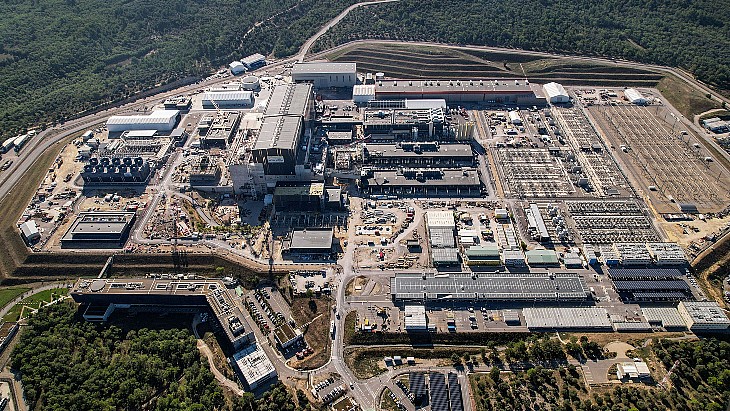The ITER Organisation has been working on what Director General Pietro Barabaschi described as a "realistic" project timeline, since he took up the role two years ago. The previous baseline, established in 2016, was for first plasma in 2025 at the giant international collaborative project which is taking shape in the south of France.
At the 34th meeting of the ITER Council on Wednesday and Thursday this week, there were presentations on progress made in construction as well as the proposed update of the project baseline which would "prioritise the start of substantial research operations as rapidly as possible. This would be achieved by consolidating tokamak assembly stages, enhancing pre-assembly testing, and reducing machine assembly and commissioning risks. Throughout this phase of assembly, the project will continually progress through critical technical milestones that will be relevant to the global fusion innovation programme".
A statement issued after the ITER Council meeting said that the director general would give more details at a press conference in July of the updated proposal "which leads to a scientifically and technically robust initial phase of operations, including deuterium-deuterium fusion operation in 2035 followed by full magnetic energy and plasma current operation. Achieving these goals will enable progression to full fusion power in the deuterium-tritium phase. The proposed baseline will be further evaluated and validated, including the increased cost and the schedule implications driven by this new approach, and recommendations will be shared with the ITER Council for consideration".
The 2016 baseline had the start of deuterium-tritium operation set for 2035. Although the new baseline means a considerable delay compared with the previous one, the reform of the programme means they cannot be directly compared, ITER says. The 2016 baseline was for first plasma to be a brief low-energy machine-test at 100 kiloamperes followed by substantial assembly and incremental operation, whereas the new baseline's start of research operation is for operation at 15 megaamperes, which would require installation of components that would not have been needed for that part of the previous baseline.
ITER at a glance
ITER is a major international project to build a tokamak fusion device designed to prove the feasibility of fusion as a large-scale and carbon-free source of energy. The goal of ITER is to operate at 500 MW (for at least 400 seconds continuously) with 50 MW of plasma heating power input. It appears that an additional 300 MW of electricity input may be required in operation. No electricity will be generated at ITER, and as well as what will be learned when it begins operations, as a first-of-a-kind project it is providing lessons and benefits for the international fusion industry throughout its construction.
Thirty-three nations are collaborating to build ITER - the European Union is contributing almost half of the cost of its construction, while the other six members (China, India, Japan, South Korea, Russia and the USA) are contributing equally to the rest. Construction began in 2010. The ITER Council members reaffirmed their support for the project, saying "the fusion operations pursued by ITER remain strongly relevant for global fusion research and development and the national fusion programmes of the ITER Members".
What has caused the delays?
There are a variety of reasons which have been given for the delays to the project. As well as general first-of-a-kind type issues there has also been the COVID-19 pandemic and the emergence of problems in the vacuum vessel sector's welding joint region and corrosion-induced cracks in thermal shield piping. Barabaschi, speaking in October 2023, said that even without those issues the 2025 first plasma deadline was not going to be met.
In the update report, the council noted the progress made on repairs and also the completion of manufacturing of all toroidal field coils, judged to be one of the most technically challenging components. Manufacturing of all the poloidal field coils has also been completed and "are examples of the critical milestones the project will accomplish throughout the assembly phase".
In the ITER statement it was also stressed that "council members re-emphasised the strong value of the ITER mission and resolved to work together to find solutions to facilitate ITER’s success ... and noted the ongoing challenges facing the project and expressed appreciation that all ITER Members are continuing to meet their in-kind and in-cash commitments to support project success".





_18570.jpg)
_16159.jpg)
_18938.jpg)
_33584.jpg)





